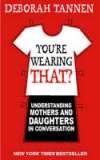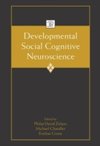
-
 Anglický jazyk
Anglický jazyk
A Comparison of the Personality of Social and Commercial Entrepreneurs
Autor: Clemens Stift
Bachelor Thesis from the year 2015 in the subject Psychology - Work, Business, Organisational and Economic Psychology, grade: 1,0, Vienna University of Economics and Business (Entrepreneurship & Innovation), language: English, abstract: The questions this... Viac o knihe
Na objednávku
16.65 €
bežná cena: 18.50 €
O knihe
Bachelor Thesis from the year 2015 in the subject Psychology - Work, Business, Organisational and Economic Psychology, grade: 1,0, Vienna University of Economics and Business (Entrepreneurship & Innovation), language: English, abstract: The questions this thesis poses are:
1. What is the influence of personality on the decision to (potentially) become a social entrepreneur?
2. Do these influences differ from the decision to (potentially) become a traditional entrepreneur?
3. How do the personalities of the social and traditional entrepreneur differ?
Answers to these questions could provide interesting implications for entrepreneurship research and practice.
Due to the increased interest in social entrepreneurship in recent years, the question as to whether or not the field transcends the theory of entrepreneurship has come up, with researchers such as Mair & Marti (Mair & Marti, 2006), supporting the idea and others acknowledging differences, but keeping it within traditional theory (Dacin, et al., 2010). It is a question as to what researcher's efforts should be focused on. By preemptively assuming that social entrepreneurship is a sub-category of entrepreneurship, one might overlook important differences, but efforts would be wasted if one just left the theory already created for traditional entrepreneurship behind.
The document is structured as follows. First, chapter 2 places personality research within entrepreneurship research and goes to introduce the theory already existent and relevant for the purpose of this thesis. Chapter 3 describes the aim and methodology of the study carried out and introduces the variables used in the subsequent analysis. Chapter 4 consists of an analysis of the data set created through the study. Here, linear regressions and means comparisons are carried out in order to find answers to the research questions. Last but not least, chapter 5 discusses the findings of the analysis carried out in chapter four.
- Vydavateľstvo: GRIN Verlag
- Rok vydania: 2016
- Formát: Paperback
- Rozmer: 210 x 148 mm
- Jazyk: Anglický jazyk
- ISBN: 9783668135628












